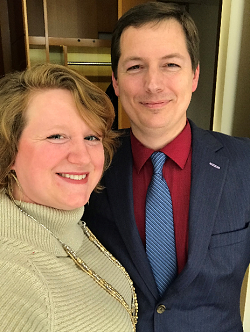AP Perspectives: Risk Reset

Electronic Epiphany
A single flash of insight changed me forever. But it wasn’t from a strong emotional experience, a gem from a trusted mentor or a Harvard lecture. It was from a game.
For my fellow, middle-aged gamers out there still rocking the mouse/keyboard combo, the game was Heroes of Might and Magic II (one of the best games ever produced). It’s a turn-based game published in the mid-90’s predicated on the basic fantasy model, with clear parallels to the business world in terms of hiring personnel, managing resources, and coordinating complex activity.
I wasn’t bad at it, but I wanted zero risk in my portfolio. I would initially stay close to my castle for safety, explore carefully and watch like a hawk for competition. I wanted no part of early competition because of the high cost compared to my resources. At the same time, I would pass on available resources when gathering them was dangerous. The game constantly kicked my butt. It wasn’t so much that I would lose; it was that I would slowly not win. My opponents were consistently better equipped, and I could not match them over time. What was I doing wrong?
Then it happened. I do not know how or why, but one day I had an epiphany: risk is the bridge to success. Until that moment, I had seen risk as the brother of defeat, an evil to be shunned. Yes, like fire, it can be dangerous, but it is filled with potential. The key is how you use it. I needed to learn to embrace risk, not just “manage” it.
For my game, that meant emotionally normalizing losses. Accepting loss as inevitable gave me the courage to gather resources widely and fight crucial early battles. Using my new mindset, punctuated by plenty of practice, my problem was solved. I began to win consistently.
It would be a while before I connected this marvelous lesson to life. Over time, I understood the greater idea and its cross applications, along with a few buttressing concepts. I would like to share these with you.
1. Start with Your Mindset
Whatever external influences come to pass in your life, always think and act as if you are totally responsible for your results. Often, it will not be true. Do it anyway. This is not about guilt or assigning blame. It’s about putting yourself in the right mindset to maximize your chances of success. Knowing it’s on us also makes us more likely to research, seek wise counsel, seize opportunities, and treat failure as one way that didn’t work. By taking full responsibility, we increase our effort, look harder for solutions, and convey a positive attitude that attracts assistance from others. And don’t forget early prototyping.
2. Rank your Goals
Prepare to take risks by identifying your goals and assigning each a value. For example, suppose you aspire to own your home and retire debt-free by fifty to focus on charitable work. On a scale of one to 10, you assign retiring a “nine” and owning your own home a “seven.” This system, or another you select, will identify priorities and aid your cost/benefit analysis. Also, for me, at least, thinking with numbers reduces subjectivity and brings clarity.
In the foregoing scenario, taking the risk of significant debt for an education may be counter to your retirement goals, but debt to start your own business might be worthwhile, especially if it will help you fund your charitable work down the road.
It’s ineffective to take action before identifying the desired outcome. It is also important to keep in mind how goals may affect each other to avoid accidentally cutting off options.
3. Protect your Core
One can’t protect everything, so choose battles wisely. It’s smart to forgo an unnecessary, unquantified, or extreme risk to your financial future, health or something of equal importance. Moreover, being deliberate about what to put into risk’s way will enable you to better protect what you do not want to risk, such as morals, ethics, core principles or key assets.
For example, if my goal is to make a difference by practicing law, a risk to my law license is grave and must be treated seriously. I cannot make a difference through the practice of law without it. A risk to my pocketbook, however, is less grave.
4. Temper the Fear of Losing
Risks are scary because you can lose. There are at least four good reasons to stop being afraid to lose.
First, avoiding or minimizing risk is more of a way to not lose than it is to win. If you refuse to bet in poker, you keep your chips but make no gains; if you don’t ask that person out, you can’t be rejected, but you won’t get a date; and if you take too much time sizing up an opportunity, you avoid committing to something you regret, but someone else may step in to enjoy what you might have loved.
Second, failing to risk is sometimes the very thing that causes the loss. My friend and co-author, Ben, was once approached by a small tech startup to take a high-level position. He was quite interested, but he had also been offered a prestigious position with a large, well-established, and highly respected company. It was a tough choice. Ultimately, he decided the tech startup was too big a risk, and he very understandably went with the established company. The name of the startup? Google.
Third, losing is not always losing. It looks binary on the surface, “You win, or you lose.” Right? But life comes in many shades of gray and keeps giving fresh opportunities. If you apply to your desired company, you may not get the position you want, but you may get in the door with a position. Asking your crush on a date may not lead to a long-term relationship, but you might find a great friend.
Finally, losing often leads directly to winning. People fail their way to success regularly. Jamie Kern Lima started her makeup business, IT Cosmetics, because she could not find something that worked to conceal her rosacea. She developed her products to appeal to everyday women and really thought she was on to something. At the 2021 Global Leadership Summit, she described the crushing volume of rejection she faced in attempting to bring her products to market, not least of all because investors did not believe women would buy cosmetics from someone of her appearance. She was weeks from bankruptcy, but she persisted. Finally, QVC gave her one chance. Her products sold out in minutes. In 2016, she sold her company to L’Oreal for $1.2 billion.
We can lose a lot and still win.
5. Make a Recovery Plan
Insurance is not a cop-out. It’s smart. If you can hedge your risk with resources stocked away against failure, that’s great! Buy literal insurance coverage, secure a backup job offer, invest in additional safety gear, or come up with two or three solid, logical reasons to justify that expensive purchase. A safety net can provide courage to move forward and save the ship, if things go wrong. A good backup plan is not just insurance, it’s assurance; you can engage the risk in the knowledge that a disaster for your plan will not be a disaster for you.
One other thing: another kind of recovery plan is psychological. Decide ahead of time that setbacks will not stop you.
6. Assess Risk Thoughtfully
The last key to risk is to be calm and structured; to balance logic and emotions when examining the variables.
To determine the nature of the risk, record the desired outcome, the barriers to success, the probability of success/failure, and the consequences of success/failure. Keep your inputs as honest as possible and make a decision accordingly. If you are concerned about your objectivity (as we often are), gather wise counsel from reputable experts. When you’ve done your analysis, stick with the answer. Numerical instruments are more trustworthy than gut feelings.
Recent Example
My co-author, Ben, owns and operates a nonprofit advertising agency. He personally knows of nonprofit organizations that did no fundraising during the pandemic because of the pandemic. He also knows of organizations that made the adjustment to virtual to hold their fundraisers anyway. Several of these organizations raised funds equal to or greater than they would have in normal times because of costs saved. One small organization in particular held an art-based raffle and managed to raise a very substantial sum for its mission. Here’s how their leader handled the risk:
1. Start with Your Mindset: we’re going to take a chance on a fundraiser through our website, even though this is new to us and we would rather do it the traditional way. We will demonstrate responsibility for the risk by doing a good job with taking high-quality pictures of items, getting advice from people who have done similar things, and investing in promoting the event.
2. Rank your Goals: Achieving our purpose is more important than playing it safe.
3. Protect your Core: We will not bet the farm on this fundraiser. We can’t survive without X dollars, so we will reserve X dollars.
4. Temper the Fear of Losing: We know we can survive with X dollars, so we can risk anything over X dollars. Whether or not this works as we hope, we will try and try again until we find something that does.
5. Make a Recovery Plan: We will build in mechanisms to pull the plug on the event if it starts going off the rails.
6. Assess Thoughtfully: We considered each risk against our research and the expert advice we received and found the event to be a good idea. We carefully built our fundraiser to position it for success. Determination: proceed!
Parting Encouragement
Changing your word associated with “risk” from “enemy” to “avenue” may be just what you need to succeed.


 Jared Doden lives in Fort Wayne, Indiana, with his beloved family, including his wife, Whitney; his two boys, Bridger and Baylen; their lionhead bunny, Bunbun, and the family cat that Baylen enthusiastically named Square. Jared serves as director of performance acceleration at Ambassador Enterprises, a legacy-minded private equity firm investing for eternal, cultural, and financial returns. He is also an attorney in the state of Indiana. Jared seeks to improve the lives of others by sharing knowledge, understanding, and wisdom as far and wide as possible. He is working with his colleagues at Ambassador to provide training and education resources in the areas of discipleship, leadership, and organization advancement.
Jared Doden lives in Fort Wayne, Indiana, with his beloved family, including his wife, Whitney; his two boys, Bridger and Baylen; their lionhead bunny, Bunbun, and the family cat that Baylen enthusiastically named Square. Jared serves as director of performance acceleration at Ambassador Enterprises, a legacy-minded private equity firm investing for eternal, cultural, and financial returns. He is also an attorney in the state of Indiana. Jared seeks to improve the lives of others by sharing knowledge, understanding, and wisdom as far and wide as possible. He is working with his colleagues at Ambassador to provide training and education resources in the areas of discipleship, leadership, and organization advancement. With a professional background in nonprofit advertising, Benjamin Ashpole helps for-impact organizations around the world grow by gaining online attention through his company, Bashpole Software /dba/ PromoterMotor.com. He has trained hundreds of employees and interns about business etiquette and leadership over the course of his career and is presently authoring a book of advice to aid people entering their first professional job. Outside of work, Ben has volunteered for numerous non-governmental organizations in a variety of capacities and is deeply involved with projects to better society and the environment on a broad scale. A Hoosier at heart, he enjoys spending time with nature, gardening, family, and rescued animals.
With a professional background in nonprofit advertising, Benjamin Ashpole helps for-impact organizations around the world grow by gaining online attention through his company, Bashpole Software /dba/ PromoterMotor.com. He has trained hundreds of employees and interns about business etiquette and leadership over the course of his career and is presently authoring a book of advice to aid people entering their first professional job. Outside of work, Ben has volunteered for numerous non-governmental organizations in a variety of capacities and is deeply involved with projects to better society and the environment on a broad scale. A Hoosier at heart, he enjoys spending time with nature, gardening, family, and rescued animals.

